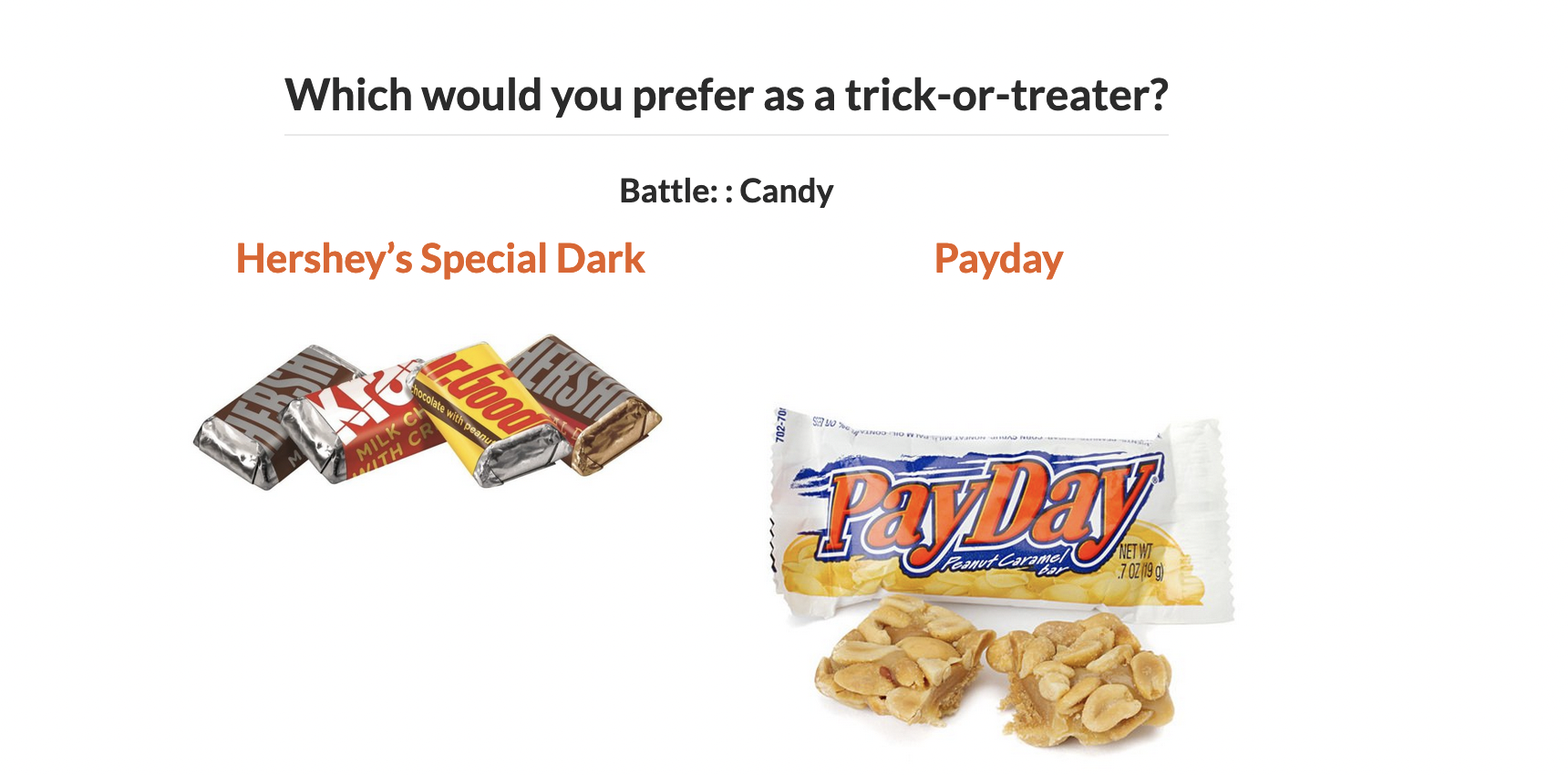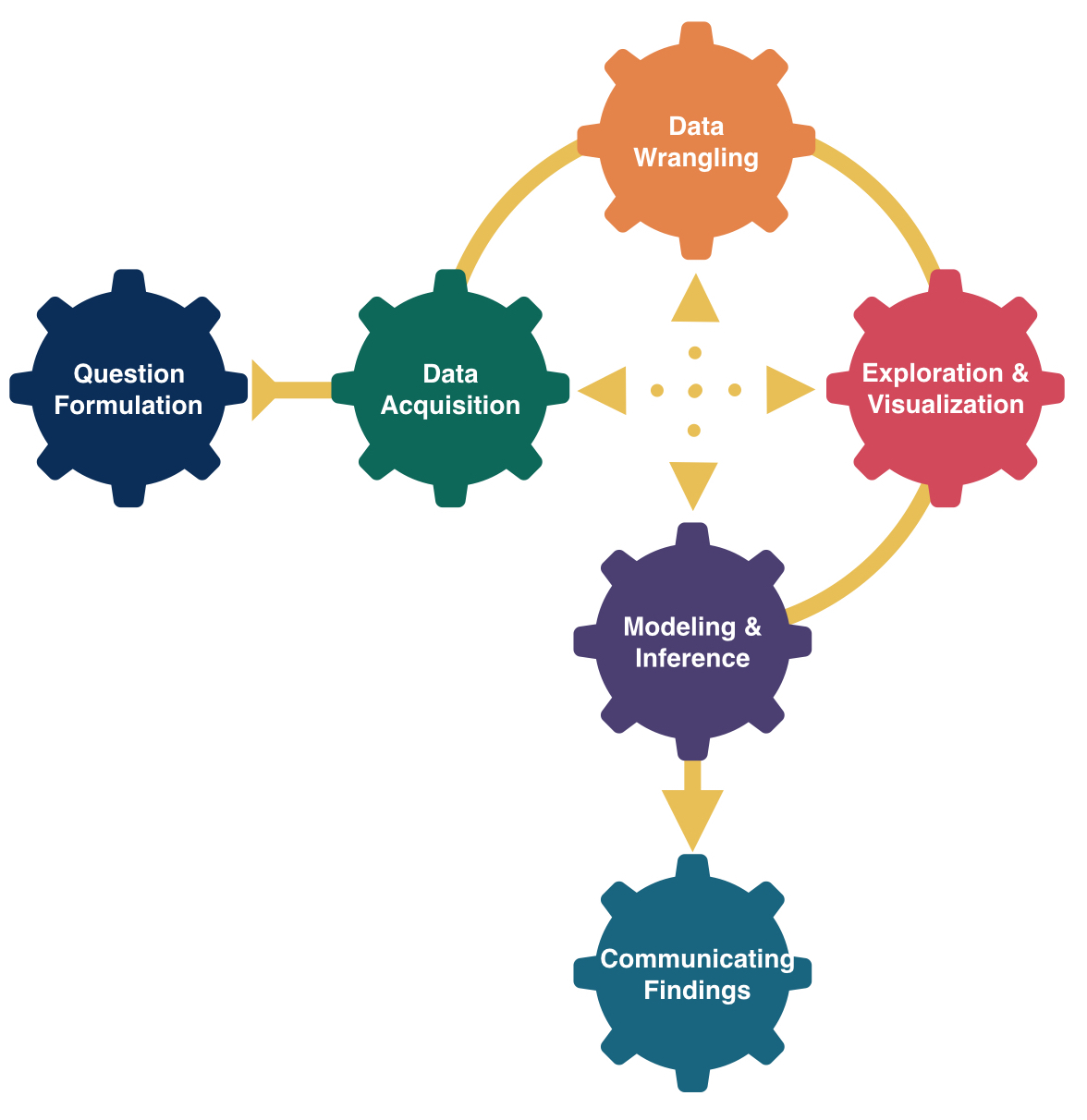

Simple Linear Regression I
Grayson White
Math 141
Week 4 | Fall 2025
Announcements
- Lab this week will meet in the thesis tower
Goals for Today
- Discuss the ideas of statistical modeling
- Learn two new summary statistics
- Introduce simple linear regression
Typical Analysis Goals
Descriptive: Want to estimate quantities related to the population.
→ How many trees are in Alaska?
Predictive: Want to predict the value of a variable.
→ Can I use remotely sensed data to predict forest types in Alaska?
Causal: Want to determine if changes in a variable cause changes in another variable.
→ Are insects causing the increased mortality rates for pinyon-juniper woodlands?
We will focus mainly on descriptive modeling in this course. If you want to learn more about predictive modeling, take Math 243: Statistical Learning, and if you want to learn more about causality, take Math 394: Causal Inference.
Form of the Model
\[ y = f(x) + \epsilon \]
Goal:
Determine a reasonable form for \(f()\). (Ex: Line, curve, …)
Estimate \(f()\) with \(\hat{f}()\) using the data.
Generate predicted values: \(\hat y = \hat{f}(x)\).
Simple Linear Regression Model
Consider this model when:
Response variable \((y)\): quantitative
Explanatory variable \((x)\): quantitative
- Have only ONE explanatory variable.
AND, \(f()\) can be approximated by a line.
Example: The Ultimate Halloween Candy Power Ranking
“The social contract of Halloween is simple: Provide adequate treats to costumed masses, or be prepared for late-night tricks from those dissatisfied with your offer. To help you avoid that type of vengeance, and to help you make good decisions at the supermarket this weekend, we wanted to figure out what Halloween candy people most prefer. So we devised an experiment: Pit dozens of fun-sized candy varietals against one another, and let the wisdom of the crowd decide which one was best.” – Walt Hickey
“While we don’t know who exactly voted, we do know this: 8,371 different IP addresses voted on about 269,000 randomly generated matchups. So, not a scientific survey or anything, but a good sample of what candy people like.”
Example: The Ultimate Halloween Candy Power Ranking
Example: The Ultimate Halloween Candy Power Ranking
candy <- read_csv("https://raw.githubusercontent.com/fivethirtyeight/data/master/candy-power-ranking/candy-data.csv") %>%
mutate(pricepercent = pricepercent*100)
glimpse(candy)Rows: 85
Columns: 13
$ competitorname <chr> "100 Grand", "3 Musketeers", "One dime", "One quarter…
$ chocolate <dbl> 1, 1, 0, 0, 0, 1, 1, 0, 0, 0, 1, 0, 0, 0, 0, 0, 0, 0,…
$ fruity <dbl> 0, 0, 0, 0, 1, 0, 0, 0, 0, 1, 0, 1, 1, 1, 1, 1, 1, 1,…
$ caramel <dbl> 1, 0, 0, 0, 0, 0, 1, 0, 0, 1, 0, 0, 0, 0, 0, 0, 0, 0,…
$ peanutyalmondy <dbl> 0, 0, 0, 0, 0, 1, 1, 1, 0, 0, 0, 0, 0, 0, 0, 0, 0, 0,…
$ nougat <dbl> 0, 1, 0, 0, 0, 0, 1, 0, 0, 0, 1, 0, 0, 0, 0, 0, 0, 0,…
$ crispedricewafer <dbl> 1, 0, 0, 0, 0, 0, 0, 0, 0, 0, 0, 0, 0, 0, 0, 0, 0, 0,…
$ hard <dbl> 0, 0, 0, 0, 0, 0, 0, 0, 0, 0, 0, 0, 0, 0, 1, 0, 1, 1,…
$ bar <dbl> 1, 1, 0, 0, 0, 1, 1, 0, 0, 0, 1, 0, 0, 0, 0, 0, 0, 0,…
$ pluribus <dbl> 0, 0, 0, 0, 0, 0, 0, 1, 1, 0, 0, 1, 1, 1, 0, 1, 0, 1,…
$ sugarpercent <dbl> 0.732, 0.604, 0.011, 0.011, 0.906, 0.465, 0.604, 0.31…
$ pricepercent <dbl> 86.0, 51.1, 11.6, 51.1, 51.1, 76.7, 76.7, 51.1, 32.5,…
$ winpercent <dbl> 66.97173, 67.60294, 32.26109, 46.11650, 52.34146, 50.…Example: The Ultimate Halloween Candy Power Ranking
Linear trend?
Direction of trend?

Example: The Ultimate Halloween Candy Power Ranking
A simple linear regression model would be suitable for these data.
But first, let’s describe more plots!


- Need a summary statistics that quantifies the strength and relationship of the linear trend!
(Sample) Correlation Coefficient
Measures the strength and direction of linear relationship between two quantitative variables
Symbol: \(r\)
Always between -1 and 1
Sign indicates the direction of the relationship
Magnitude indicates the strength of the linear relationship
\(r\) is calculated using the sample means (\(\bar{x}\), \(\bar{y}\)) and standard deviations (\(s_x\), \(s_y\)) of the variables \(x\) and \(y\):
\[r = \frac{1}{s_x s_y} \cdot \frac{1}{n-1} \sum_{i =1}^n (x_i - \bar{x} ) (y_i - \bar{y} ) \]
Sidenote: (Sample) Covariance
Sample Correlation Coefficient: \[ r = \frac{1}{s_x s_y} \cdot \frac{1}{n-1} \sum_{i =1}^n (x_i - \bar{x} ) (y_i - \bar{y} ) \]
Sample Covariance:
\[ cov(x, y) = r \times s_x s_y = \frac{1}{n-1} \sum_{i =1}^n (x_i - \bar{x} ) (y_i - \bar{y} ) \]
The sample correlation coefficient is a standardized sample covariance, which is what causes it to only take values from -1 to 1. The sample covariance can take any real value.
New Example
# A tibble: 12 × 2
dataset cor
<chr> <dbl>
1 away -0.0641
2 bullseye -0.0686
3 circle -0.0683
4 dino -0.0645
5 dots -0.0603
6 h_lines -0.0617
7 high_lines -0.0685
8 slant_down -0.0690
9 star -0.0630
10 v_lines -0.0694
11 wide_lines -0.0666
12 x_shape -0.0656- Conclude that \(x\) and \(y\) have the same relationship across these different datasets because the correlation is the same?
Always graph the data when exploring relationships!

Returning to the Simple Linear Regression model…
Simple Linear Regression
Let’s return to the Candy Example.
A line is a reasonable model form.
Where should the line be?
- Slope? Intercept?

Form of the SLR Model
\[ \begin{align} y &= f(x) + \epsilon \\ y &= \beta_o + \beta_1 x + \epsilon \end{align} \]
- Need to determine the best estimates of \(\beta_o\) and \(\beta_1\).
Distinguishing between the population and the sample
\[ y = \beta_o + \beta_1 x + \epsilon \]
- Parameters:
- Based on the population
- Unknown then if don’t have data on the whole population
- EX: \(\beta_o\) and \(\beta_1\)
\[ \hat{y} = \hat{ \beta}_o + \hat{\beta}_1 x \]
- Statistics:
- Based on the sample data
- Known
- Usually estimate a population parameter
- EX: \(\hat{\beta}_o\) and \(\hat{\beta}_1\)
Method of Least Squares
Need two key definitions:
- Fitted value: The estimated value of the \(i\)-th case
\[ \hat{y}_i = \hat{\beta}_o + \hat{\beta}_1 x_i \]
- Residuals: The observed error term for the \(i\)-th case
\[ e_i = y_i - \hat{y}_i \]
Goal: Pick values for \(\hat{\beta}_o\) and \(\hat{\beta}_1\) so that the residuals are small!
Method of Least Squares
Want residuals to be small.
Minimize a function of the residuals.
Minimize:
\[ \sum_{i = 1}^n e^2_i \]

Method of Least Squares
After minimizing the sum of squared residuals, you get the following equations:
Get the following equations:
\[ \begin{align} \hat{\beta}_1 &= \frac{ \sum_{i = 1}^n (x_i - \bar{x}) (y_i - \bar{y})}{ \sum_{i = 1}^n (x_i - \bar{x})^2} \\ \hat{\beta}_o &= \bar{y} - \hat{\beta}_1 \bar{x} \end{align} \] where
\[ \begin{align} \bar{y} = \frac{1}{n} \sum_{i = 1}^n y_i \quad \mbox{and} \quad \bar{x} = \frac{1}{n} \sum_{i = 1}^n x_i \end{align} \]
Method of Least Squares
Then we can estimate the whole function with:
\[ \hat{y} = \hat{\beta}_o + \hat{\beta}_1 x \]
Called the least squares line or the line of best fit.
Method of Least Squares
ggplot2 will compute the line and add it to your plot using geom_smooth(method = "lm")

But what are the exact values of \(\hat{\beta}_o\) and \(\hat{\beta}_1\)?
Next time: more simple linear regression
- We’ll use
Rto compute the least squares line and exact values of \(\hat{\beta}_o\) and \(\hat{\beta}_1\). - We’ll introduce the formal assumptions we must make when doing linear regression, and diagnostic plots to check these assumptions.
